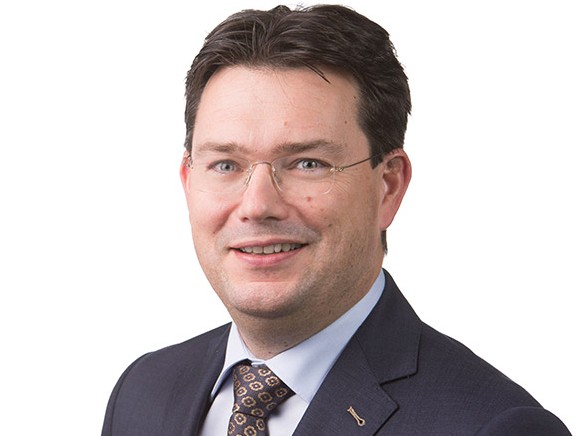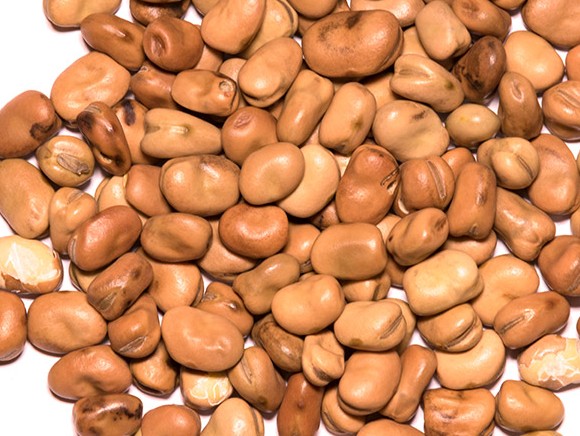
In order to provide all the people in the world with food in the future, it is necessary that they obtain a large portion of the proteins that they consume, from plant sources. Fred van Velde leads the research that NIZO (an organisation for contract research) conducts in Ede into protein functionality.
“My fascination with proteins began with the scientific challenge involved”
Since the end of last year, Van de Velde has also been a lecturer on protein transition in nutrition at the HAS University of Applied Sciences in Den Bosch.
“The subject of protein transition is a high priority at the HAS University of Applied Sciences. HAS works on socially relevant challenges, which include protein transition in nutrition related to futureproof global food sources.” The project PULSE – which stands for Protein Utilisation from Legumes for a Sustainable European crop – forms a significant component of my lectureship. It entails a project that is partially funded by SIA Raak Pro. PULSE is one of the 25 projects selected for funding from 2016, which altogether were granted 17.5 million euros. In addition to HAS and NIZO, participants in the project include Limagrain, GEA, Cosucra, MFH Pulses, Ruitenberg Ingredients, and Sofine Foods.
“Originally, I was a chemical technologist and was educated at TU Delft. After I received my PhD for biocatalysis, I “wandered off” into the field of nutrition and conducted research into carbohydrates and proteins. 15 years ago there were no strategic investments made for research into plant-based proteins. In the last 10 to 15 years, there has been a lot of interest in it. That originally came about from a cost perspective: plant-based proteins, e.g. those from food remnant streams, are generally cheaper than animal-based proteins. It involves the development of proteins with the required nutritional value, technical opportunities, and the right scent and flavour.”
“Whether or not limiting the consumption of meat is better for health is not my area of expertise. The Voedingscentrum (health and nutrition centre) states that a different diet is better and meat plays a smaller part in that diet. Health and sustainability are both important, but my fascination with proteins began with the scientific challenge involved.”
“The broad bean is a good candidate for playing a significant role in protein transition”
“The challenge lays in the development of proteins that gel, foam, and emulsify according to requirements. The protein must yield amino acids in the right ratios and be easily digested and processed. The bar is set high for replacing proteins from foods such as meat or dairy. Cost remains an important element, but when striving to replace animal-based proteins with plant-based ones, sustainability plays a bigger role. The production of animal-based proteins has a much larger carbon footprint. According to the Green Protein Alliance, we have to achieve a 50:50 ratio. According to a model, Wageningen University proposes that the ideal proportion is 65:35. 35% animal-based protein is the right amount for utilising food remnant streams and crops that humans cannot digest.
“The crops we are looking into are peas, broad beans, and lupin beans. One of the partners in the project, Limagrain, already has legumes like peas and broad beans in its portfolio. Protein from peas is an important product in the industry and it is on the rise. It is created as a by-product of pea flour. The broad bean is a good candidate for playing a significant role in protein transition. At the moment, there is very little cultivation of pulses in the Netherlands. It used to be common in Zeeland; I can also remember helping my friends harvest them. The broad bean has a high yield per hectare. At six to eight tons, that is two times as much when compared to peas. Therefore, this could be interesting for farmers. Furthermore, it is important that a crop can be successful in our region, Northwest Europe. We have a preference for a source that is also sustainable because it does not need to be transported across many kilometres.
“The goal is to yield improvements in all links of the protein production chain. What is unique about our project is that every link is represented. The demands of the consumer have been gathered and processed by the manufacturer. This ultimately leads to information that is necessary for hybridising seeds. Therefore, the improvements will involve everything from what is necessary for production via extraction to the selection of the seeds: the specific seeds that are required to achieve the proper texture. We will improve functionality and focus on protein ingredients for use in high-quality products. Meat substitutes are an example of this, but in the future, this will apply to clinical nutrition and food for the elderly and small children as well.

We expect that it will take another four years. In the meantime, we are already presenting the results from different areas of our project.”
“Inspiring! I did notice that during my first few lectures, I primarily thought about the amount of insight and information that I wanted to convey. The speed of it all is now more in line with the setting.”
Source: Beeld: ©NIZO-MIRJAM VAN DE VELDE